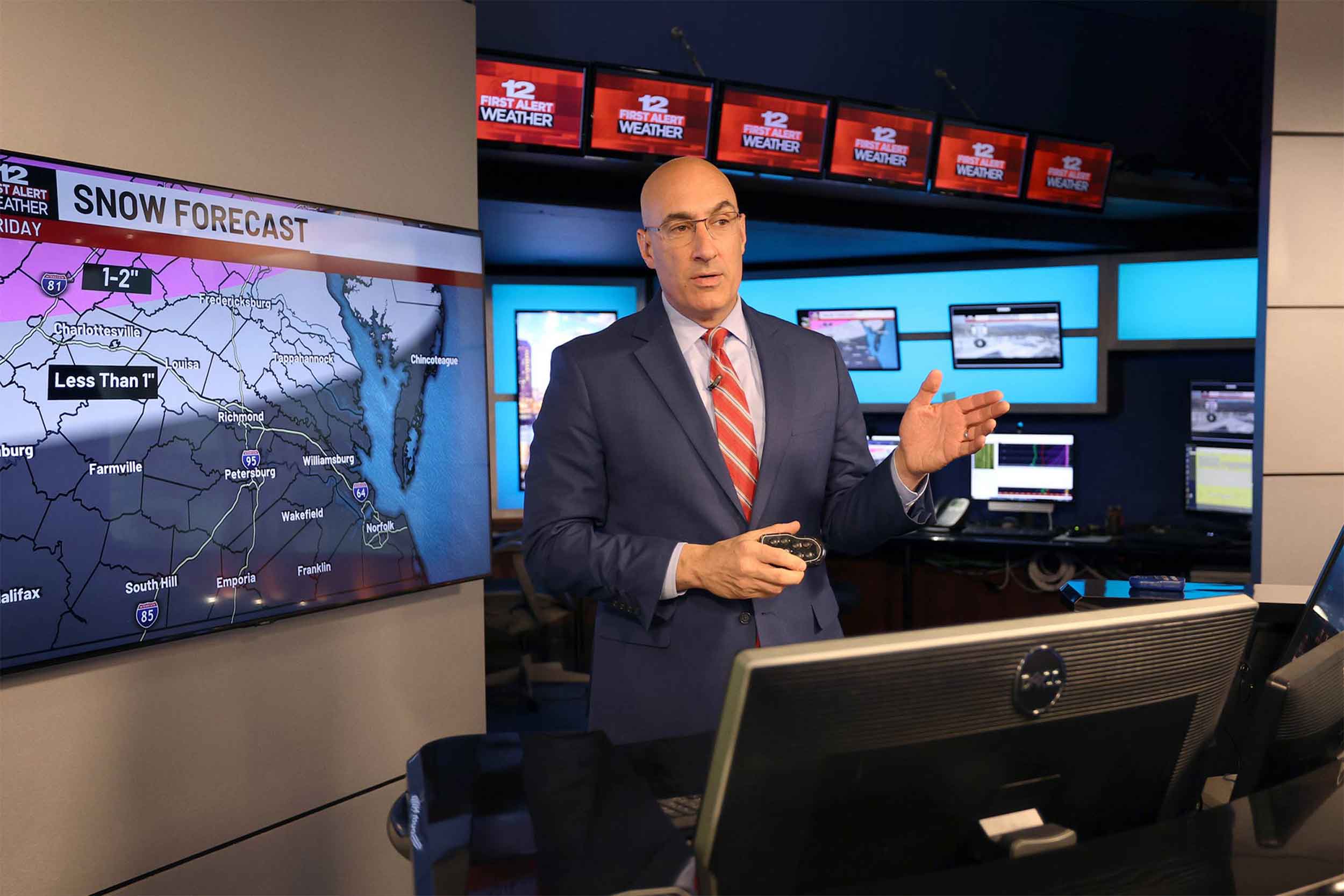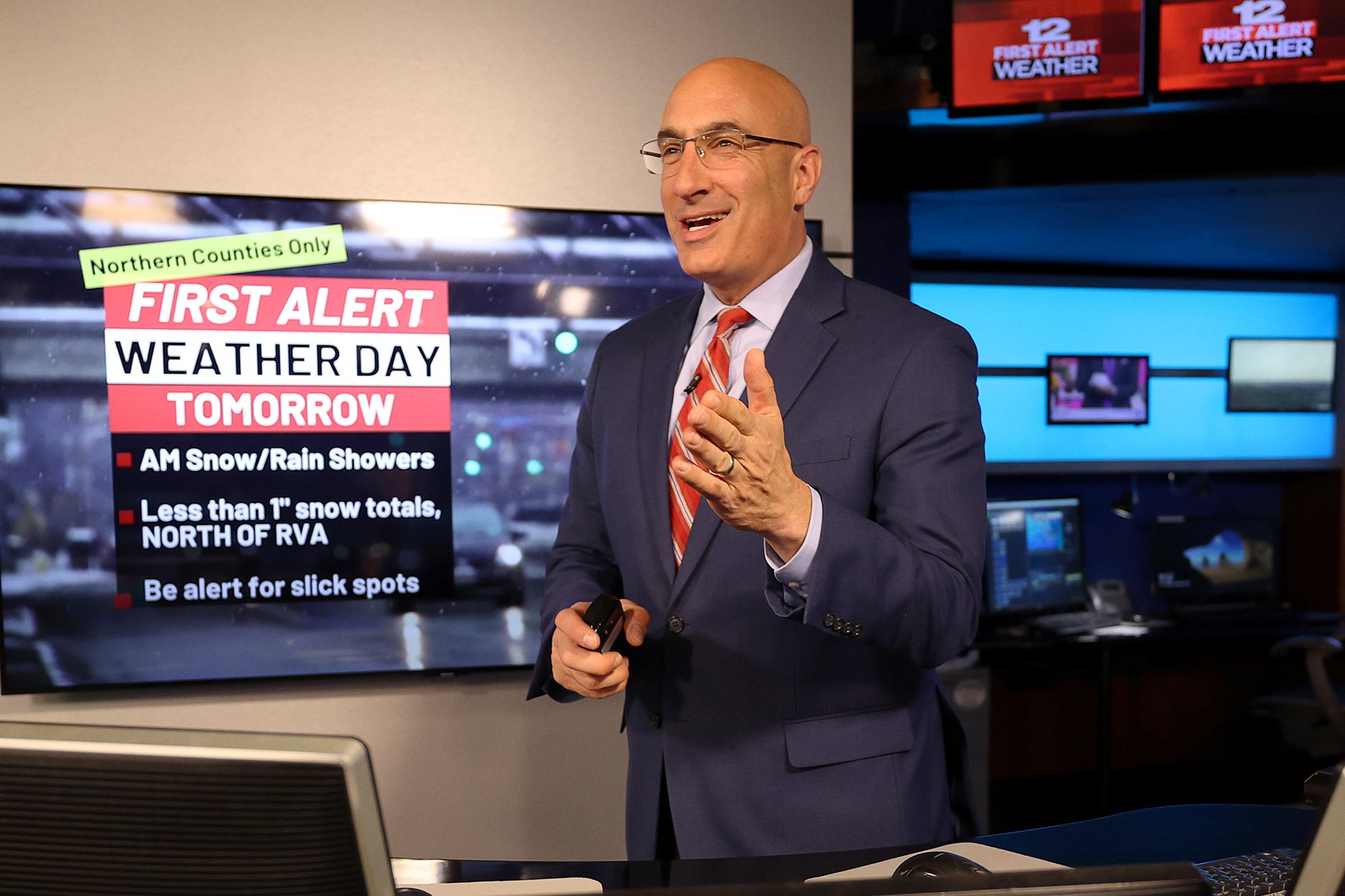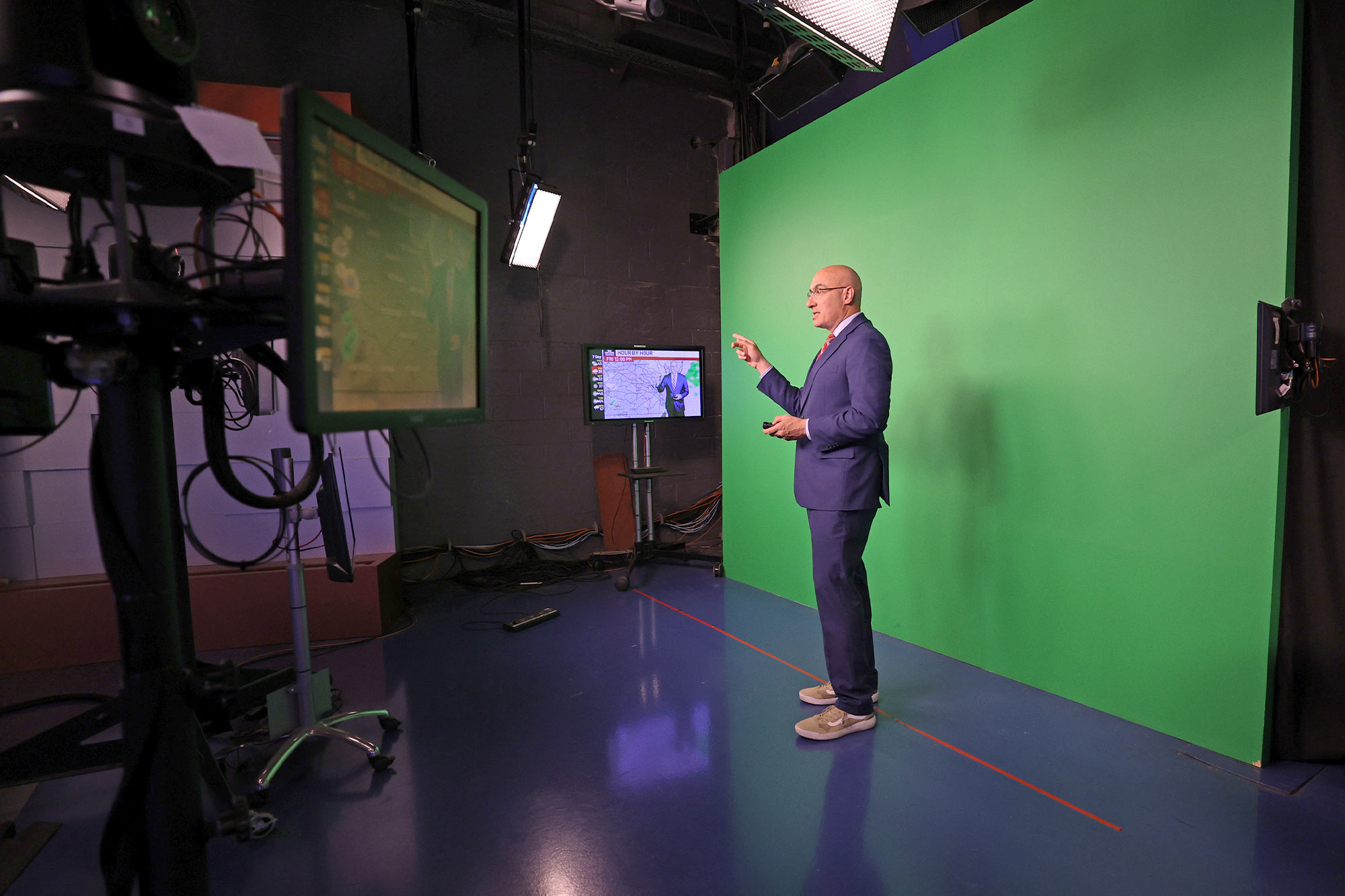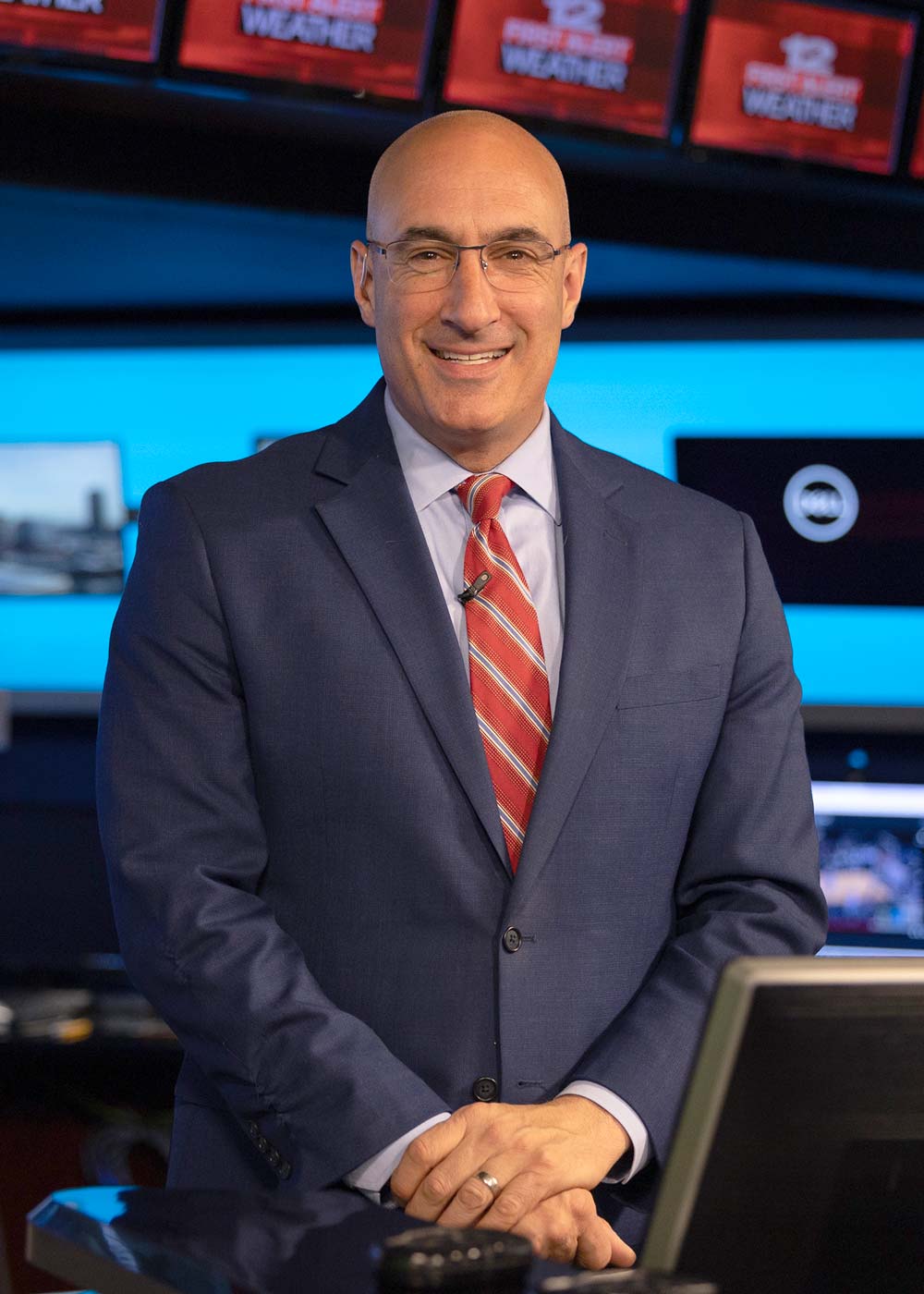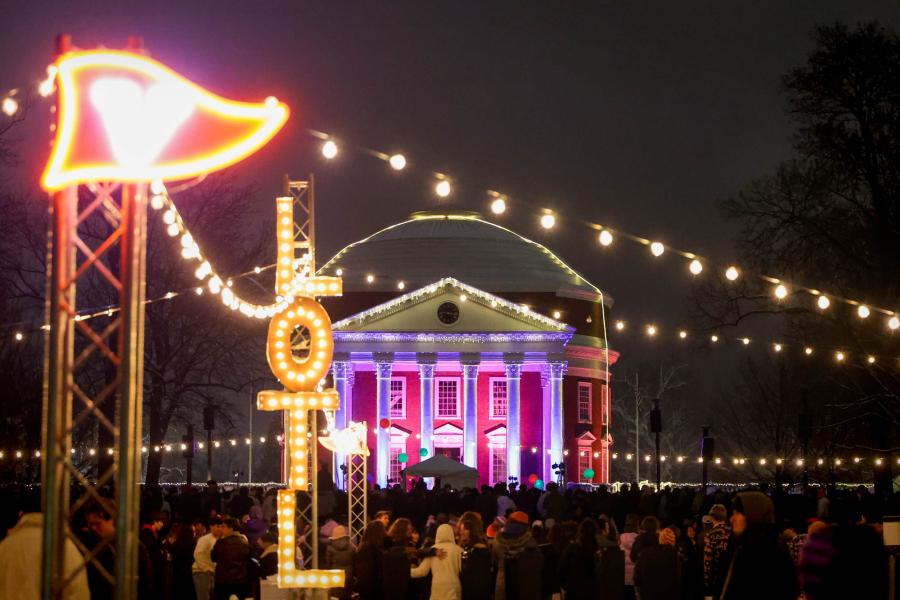“Learn from your last play and be better. You’ve got to get out there and really focus and try to deliver the best forecast you can the next time around.”
January is typically the month where those in Freiden’s line of work are under the brightest spotlight, as the weather turns frigid and the potential for snow is – sometimes literally – in the air.
Naturally, many look to their local forecaster to help navigate their day or week.
“The way I approach snow, there’s a lot of stress because so many people are paying close attention,” Freiden said. “And so many people need really good guidance and information as to what’s going to happen.”
Freiden, a five-time regional Emmy Award winner, has long been a trusted source in Virginia’s capital city, especially during the winter. He said one of his greatest delights this time of year is when he correctly forecasts a snowstorm and then viewers send him pictures and videos of them or their children playing in it.
The images take Freiden back to his childhood and the sled rides he’d take in his Reston neighborhood.
“The joy of sledding is unbeatable,” Freiden said. “And we got lots of snow when I was a kid.”
Central Virginia residents got their first taste of snow this year earlier this week, and there’s an expectation that more is on the way over the next month or two, Freiden said.
We caught up with Freiden, who graduated from UVA in 1995 with a degree in environmental sciences, to learn more about the role of a broadcast meteorologist in winter.
Q. Meteorologists occasionally get labeled for “overhyping” snow. What should people know about the unpredictability of forecasting a snowstorm?
A. They should know that any error in predicting the amount of liquid in a system is magnified by the fact that snow is fluffier than water. So, if there’s an inch of liquid to work with, you’d say, “OK, that could be eight to 10 inches of snow in a normal situation.”
If we forecast rain on a July day, and we say it’s going to rain an inch, and it only rains a half an inch, people say, “Well it rained. That guy was right on,” and the impacts would be pretty similar.
But if it’s the winter and you miss by that order of magnitude, you’re talking about the difference between five inches of snow and 10 inches of snow. People notice that.
Q. What’s unique about forecasting snow in Central Virginia?
A. We have a couple of big snow influencers close by. The Appalachian Mountains to our west trap cold air that comes in on a northeast breeze when there’s really cold, dry air up in Eastern Canada. We are a little too far south to get as much snow as we do, but the mountains kind of help us out by trapping that cold air in place. Plus, we are close to the ocean, which can supply ample moisture for our blockbuster storms. Often the ocean brings a strong warm influence that bends snowstorms toward a mix or rain.
So, we’re in this weird spot where there are a couple of things that can make a big difference when you’re looking at a simulation of how the storm is going to develop.
Q. What is your favorite part about forecasting snow?
A. When you nail it, when you get the snow forecast right on, it’s a good feeling!
Q. How often does that happen?
A. (Laughs) The famous joke is, “Hey, you’re the only person who can be wrong half the time and still keep your job.” And I respond. ‘Listen, we have the data. It’s closer to 51-52%, so back off!”
I would say we can feel good about how it turns out about 70% of the time. It’s never perfect. A heavy band could move in to one area, and we hear, “I got too much,” while others say, “I didn’t get enough.” But we feel pretty good about it most of the time. There’ll be occasions when you miss.
Q. Any of those occasions stick with you?
A. Yes. It was in the early 2010s, so not recent, but it was an Arctic front, which is the leading edge of super-cold, dry air. And most of the time they are so cold and dry that they don’t have a lot of moisture to work with. So, an Arctic front will come through and you won’t get much snow. It’ll be a half an inch to an inch or just flurries or something like that.
So, this one time, an Artic front was coming through and we forecasted that we may get an inch or two for the morning commute. Well, this front came through and it just started snowing and didn’t stop. And it just absolutely piled up, the roads got covered immediately. I had co-workers who were caught out in 4, 5, 6 inches of snow. It was a borderline blizzard situation. And it was miserable. It snowed way more than we thought it would.
And because this was in the morning, school buses were on the road, people were driving, and they were getting stuck everywhere. So, I remember that. That sticks out to me, and I always do my best to never underestimate Arctic cold fronts when I’m forecasting. Big snows come from spinning storms, areas of low pressure; they don’t typically come from Arctic fronts. But now I’m always skeptical of them. ... “OK, how can this one over-perform?”
But that was a humbling and miserable morning.
Q. Are there any trends you’re monitoring this winter when it comes to snow?
A. The big trend is that this is an extremely strong El Niño winter, which played out as expected in December with a warm month with lots of rain.
In these El Niño winters, typically you transition to a more snow-friendly environment in January and February. So, I think for snow lovers, they should still hold out hope that we’ll continue to have snow chances as we get through the rest of January and February.
Q. How has your UVA experience helped your career as a meteorologist?
A. While I was not anywhere close to winning, you know, “Best Environmental Sciences Student of 1995,” I did soak up a lot and learn a lot. My colleagues, who went to meteorology schools, sometimes look at my undergrad degree with envy because it’s so broad-based. Geology, ecology and hydrology all fit into it as I was able to focus on the Earth holistically.
One of the things that I try to do here in Richmond is to be a good educator on all sorts of things. I think of myself not just as a meteorologist, but as the station scientist. That foundation was laid by getting that environmental sciences degree. I’m proud to be a Clark Hall guy! I enjoyed my time there. And I learned a lot.
